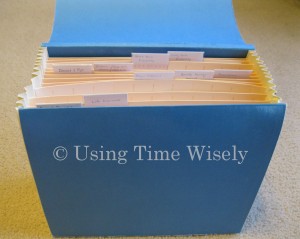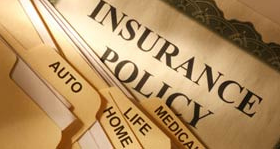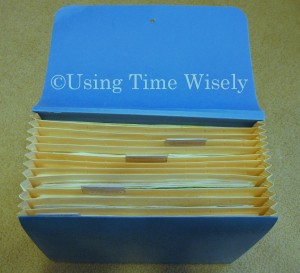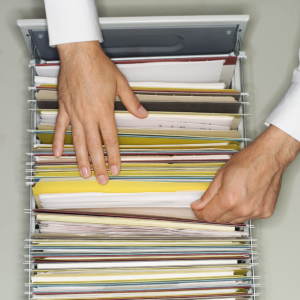 With all our Box 1 documents filed and organized into the four categories: Credit Cards/Reports, Personal Documents, Home Ownership, and Vehicles, let’s concentrate on Box 2 which houses all the insurance documents. The first category housed in the first file opening holds our personal insurance documentation.
With all our Box 1 documents filed and organized into the four categories: Credit Cards/Reports, Personal Documents, Home Ownership, and Vehicles, let’s concentrate on Box 2 which houses all the insurance documents. The first category housed in the first file opening holds our personal insurance documentation.
Personal Insurance Documentation
- Summary Page
- Annual Enrollment Reports
- Former Severance Package
- Privacy Policies and Travel Insurance
- Medical Information Bureau (MIB) Files
Summary Page
Because this insurance file holds policies and paperwork that will be needed during possible life-changing events, I keep a one-page summary in each category of this insurance file that contains the following vital information for each policy we hold:
- Type of policy
- Policy number(s)
- Name of insurance company
- Web site address of insurance company
- Telephone number of insurance company
- User name, password, and security questions to access the account(s)
- Benefit administrator’s contact information
In the event that immediate contact with these companies is needed, Paul or I can get one of these summary pages and get access to our accounts. If you, like me, are the one that registers the accounts and handles the insurance paperwork, please be sure your family has access to your passwords.
A close friend panicked for 3 days after the sudden loss of her husband because there was no record of the passwords. Besides planning a funeral, housing guests, and taking time to grieve, she was trying to access her accounts. She finally succeeded, but she exerted energy and time that could have been used elsewhere had she known or knew where to look for those passwords.
In using time wisely, I highly recommend that you write down the information, store it securely, and inform your family or a close, honest friend of the location to this information.
Having a summary page will help you access your documentation quickly if you need to increase your coverage, change your contact information, or request information. In using time wisely, a little time now compiling this summary page will save you time, energy, and frustrations down the road. Just adding the policies you have now will be a great start. Happy organizing!
Question: How do you keep track of your passwords? I write down the information on the packet of documents for that company. The documentation is then housed in one of my filing boxes under the appropriate category. How does your system differ? Please add your answer to the comments.




